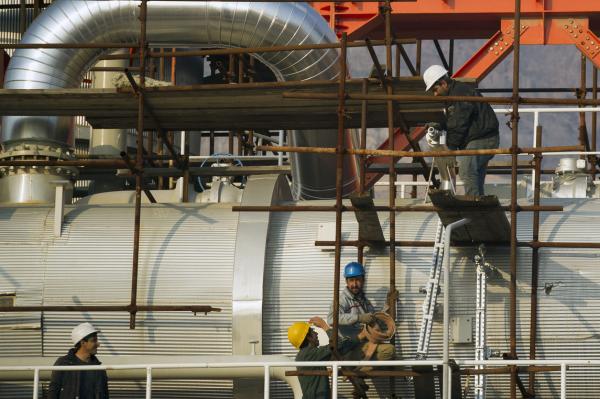
July 12 (UPI) — Technological advances have led to declines in labor tied to oil and gas with only small impacts on production, the International Energy Agency said.
A report from the IEA on overall capital spending in an era where crude oil prices have lingered at historic lows found technological gains are having a clear impact on employment.
“In general, technological progress is leading to lower labor intensity across the energy system,” the IEA reported. “For example, a 30 percent drop in jobs in U.S. oil and gas upstream from its peak level in 2014 to its trough in 2016 was accompanied by only a marginal decrease in production.”
U.S. oil production has remained robust even as crude oil prices hover in the mid $40 range, down more than 50 percent from three years ago. The cost to pull shale oil out of inland basins is less than it was and rig counts, which provide an indication for the appetite for spending on exploration and production, have increased even as crude oil prices move lower.
The U.S. Labor Department reported last week that total non-farm payrolls increased 220,000 in June, though the overall unemployment rate was little changed. Average hourly earnings increased 4 cents in June and the number of people without full-time employment was unchanged.
U.S. President Donald Trump has focused on oil and natural gas as part of his broader economic agenda. Compared with total non-farm payroll gains for June, the oil and gas extraction sector added less than 1,000 jobs from May and employment in that sector is relatively unchanged from last year.
A report on automation highlighted this year by the World Bank found technology advances had mixed impacts across the entire labor sector. Weaving technology advanced during the Industrial Revolution, but that made cloth cheaper, increased demand and encouraged more hiring. For other products, automation and other advances can replace labor, but it rarely eliminates an entire occupation altogether.
The IEA’s report found that about $47 billion was spent last year on digitizing parts of the oil and gas sector. Total investments in energy last year was just over $1.7 trillion, but down about 12 percent compared with the agency’s estimate from 2015.






